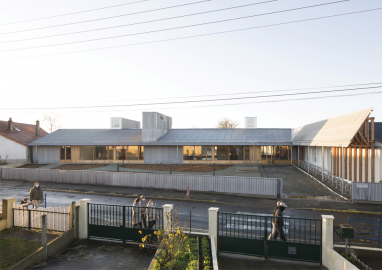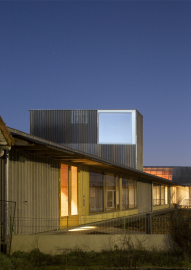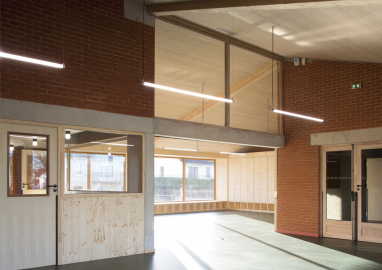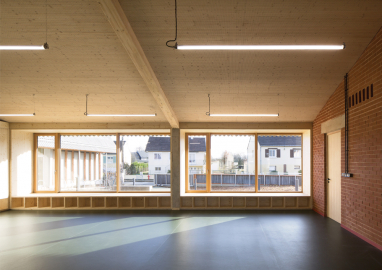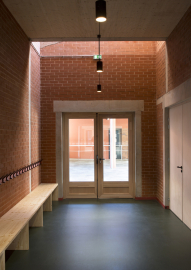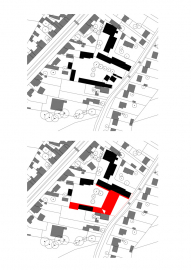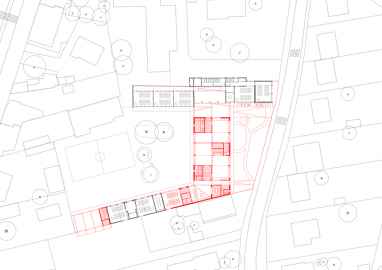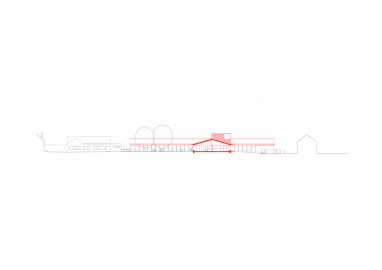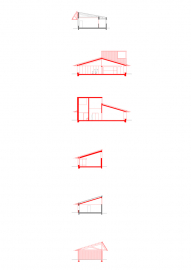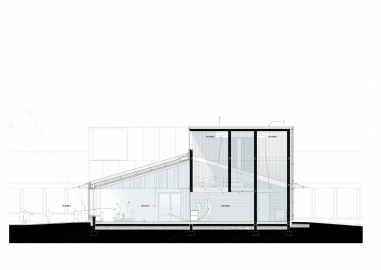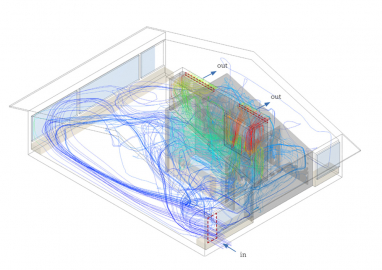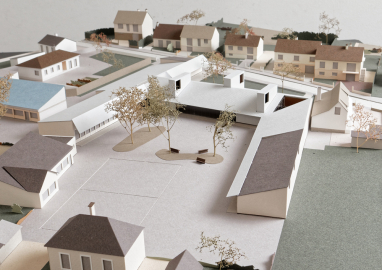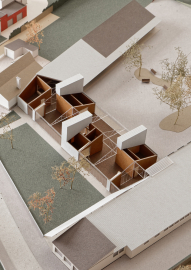Nursery and Primary School
The project consists in a transformation and reparation of the René Cassin School in Guécelard, in the department of Sarthe. The project was completed in 2020 with the addition of a new building containing classrooms and facilities, and of a new courtyard and entrance.
Surface of the new building: 830m²
Surface of the renovated existent buildings: 730m²
Unifying the school: one courtyard, one roof
The courtyard formed by the different existent buildings dating from 1977 and 1987 was for us the central element of the school, its main quality. The proposed extension joins the different structures around the central courtyard. New roofs unify the ensemble by connecting the existent buildings, taking the form of a continued gallery on both sides of the main building and creating covered spaces for the children and teachers.
Defining the unbuilt spaces by the built one
The new construction protects the school and playground from the public space while creating a new paved forecourt. This gives a real entrance to the building where parents meet and wait for their children, a space that didn’t exist before.
This layout enables an insertion in the urban fabric of the neighboring pavilion houses, by reinterpreting the relation of the house to the street created by the front yards.
In parallel to this idea of subdivision of the spaces, we have imagined new covered playgrounds where the new building meets the existing one: a closed multi-purpose space and a second one inserted between the courtyard and the pedagogical garden.
A register of interventions
Before the 2020 renovation, the school was constituted by a multitude of unqualified volumes, added through time without coherence and thought for the school’s organization and entity. The project’s ambition was to recreate an architectural and programmatic unity to qualify the school as an educational institution and upgrade its relation to the public space.
This was done by producing a register of interventions answering the different needs of the situations: reparation, improvement, adaptation and new constructions.
Understanding the use of a bioclimatic building
A challenge has been to anticipate the questions of use of a building with high bioclimatic properties that require the user’s implication on a daily basis. There has been an ongoing dialogue with the school team and staff regarding the building’s simple and natural yet different solutions in terms of ventilation and heat control. The project implements solar chimneys valorizing a natural ventilation which only requires the users to open the windows when the exterior temperature is over 22°C.
Reinterpreting the existent
We have reinterpreted the ordinary constructive principles of the existing buildings, made of masonry, wooden or metal structures and roofs in fiber cement. The new building is organized around blocs called ‘chimneys’. They are built in masonry and contain vestibules, toilets, locker rooms and storage space on which lies a wooden framework covered in the same covering as the existent. This principle enables to create large volumes in between, where light walls divide the spaces.
Sustainable and bioclimatic solutions
Following the seasons, the ventilation of the school varies between a mechanical and a natural system. During covered weather, the mechanical system ensures the ventilation and renewal of the air inside the buildings. A natural ventilation takes over as soon as the sun shines, heating the masonry chimneys and thereby creating a natural air flow by differential pressure.
This solution, combined with the implantation of the buildings, the natural isolation and the large roof overhang, contributes to produce a bioclimatic architecture by its organization and construction in exchange for technological solutions.

